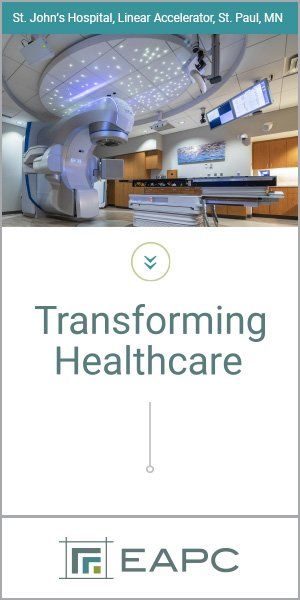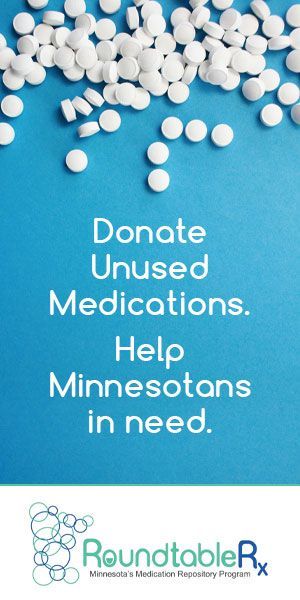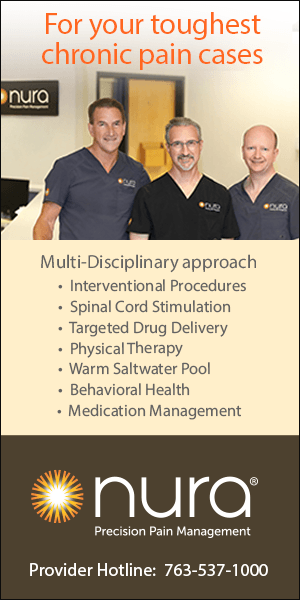or over three decades, intrathecal (IT) targeted drug delivery (TDD), sometimes referred to as “pain pump therapy”, has become a more common treatment for patients suffering from intractable chronic pain. As an interventional pain physician, I have often heard my patients express deep gratitude for their implanted pain pumps, frequently calling them “life-saving” and “the best decision I ever made.” Beyond anecdotal evidence, patients who receive them have a high re-implant rate of over 95% at the end of battery life, a strong indication of the extraordinarily high satisfaction with TDD therapy. But beyond this, there were very little real data to quantify patient satisfaction.
Pain Management
Targeted Drug Delivery for Chronic Pain
A review of patient survey data
BY David M. Schultz, MD
In 2018, Nura Pain Clinic undertook an anonymous 18-question survey of its patients with pain pumps to assess satisfaction levels in three areas: relief of pain, improvement in quality of life and improvement in physical function. Secondary outcomes evaluated opioid consumption, health care utilization, comfort of the implanted pump and side effects. The results from 443 respondents, published in the May 2020 issue of Minnesota Physician, showed that TDD is effective in pain relief, reduction in opioid use, decrease in ER visits and cost-effectiveness in long-term management of complex chronic pain.
However, since our first study was anonymous, there was still a paucity of data correlating dosages of IT medications with pain relief, side effects, mental clarity, physical functioning, health care utilization and overall satisfaction with the therapy. So, in 2020, our team conducted a second survey, this time an in-depth, identified-patient study to investigate the relationship between IT opioid dosing and patient satisfaction. In our clinic, we routinely use IT opioid-local anesthetic admixtures dosed at the higher end of Polyanalgesic Consensus Conference (PACC) guidelines and hypothesized that the higher dosages directly correspond with high patient satisfaction in our TDD patients. This challenges the widely held and long-standing belief that low doses of IT pain medications are most effective and safest by balancing side effects with efficacy.
Study Design and Methods
From November 2021 to February 2023, we identified 973 active TDD patients from our electronic health records (EHR). We invited all patients to complete a 23-question survey designed to assess pain relief, quality of life, opioid reduction, mental clarity, side effects and overall satisfaction. Of these, 564 patients responded, and 560 were included in the final analysis. Unlike our previous 2020 survey, which was anonymous, this study linked responses to specific patient profiles, enabling a deeper analysis of dosing and satisfaction trends. The survey compared satisfaction with IT medication dosages, pain relief, pain diagnosis, catheter tip location, side effects, mental clarity, physical functioning and health care utilization. Outcomes were reported as proportions; P < .05 was considered significant.
We were able to compare satisfaction among different patient populations.
We administered the survey utilizing self-reported, multiple-choice responses to examine satisfaction with TDD therapy in a single pain clinic practice with uniform standards for TDD management. We analyzed responses to survey questions to examine patients’ attitudes, behaviors and outcomes surrounding their TDD therapy, then correlated these responses to the specifics of individual therapy recorded in their electronic health record. We validated data mined from our EHR with our ad hoc de-identified data collected in the Medtronic Product Surveillance Registry by temporarily re-identifying the PSR and cross-referenced this with the data gleaned from our electronic health records. Data from the Medtronic PSR were initially gathered via chart review and patient interview per PSR study protocol, then audited for accuracy and completeness by Medtronic. This enabled us to identify trends in satisfaction and side effects that we could not analyze in an anonymous survey. Furthermore, by incorporating demographic and diagnostic information, we were able to compare satisfaction among different patient populations, providing valuable insights into who benefits most from TDD.
Patients did not receive compensation for survey completion and all survey data were de-identified once EHR review was complete. The protocol was reviewed by an Institutional Review Board, which approved waiver of authorization for use and disclosure of protected health information.
We routinely use bupivacaine mixed with one of three opioids – morphine, fentanyl and/or hydromorphone – for our pain pump infusions. We believe that bupivacaine is an extremely important medication for our spinal admixtures because it relieves pain by blocking pain fiber nerve conduction, providing synergistic analgesia with opioids, which are blocking spinal opioid receptors. A key innovation of this study was our introduction of the Intrathecal Morphine Milligram Equivalents (IMME) metric, a standardized scale for comparing the potency of IT opioids. This allowed us to classify patients into low, medium and high IT opioid dose groups and correlate these levels with their reported outcomes.
Key Findings
Four important things stood out.
Higher Dose IT Therapy Correlates Positively with Greater Satisfaction Among respondents, 80.7% reported high satisfaction with their pump therapy, and 89.7% noted improvements in quality of life. Interestingly, patients on higher IT opioid doses were the most satisfied, even when exceeding the traditionally recommended dose ranges. This contradicts the long-standing belief that lower doses are preferable due to presumed increased side effects and complications with higher dosing.
One possible explanation for this finding is that higher doses provide more consistent and effective pain relief, leading to better outcomes in terms of daily function and overall well-being. Patients who were able to achieve greater pain control with increased IT doses reported improved mobility, better sleep quality and the ability to return to activities they had previously abandoned. This suggests that individualized dosing strategies should be prioritized over rigid adherence to conservative dosing guidelines.
Higher IT Doses Were Not Associated with Increased Side Effects A key concern regarding high-dose IT therapy has been the potential for increased adverse effects. Our data indicate otherwise, however: patients in the high-dose group reported fewer bothersome side effects than those in the low-dose group. Side effects such as nausea, dizziness and somnolence were more prevalent in lower-dose patients, likely because those who could not tolerate IT opioids never advanced to higher doses. In other words, the population at higher doses consisted of patients who are able to tolerate intrathecal medications.
Additionally, our findings suggest that higher-dose patients may have experienced fewer side effects due to a more stable pain relief experience, reducing the need for additional oral medications that often contribute to undesirable symptoms. This challenges the assumption that increasing IT opioid dosing necessarily leads to a greater burden of side effects, and highlights the importance of careful titration based on patient response.
TDD Significantly Reduces Systemic Opioid Use One of the primary goals of TDD is to move patients away from systemic opioids, which are associated with substantial risks and negative side effects, including cognitive impairment, addiction and overdose. In our study, 78.5% of respondents reduced or discontinued systemic opioids after implant, with 50.2% stopping oral opioid use entirely. This underscores the role of TDD as a viable and effective alternative to long-term systemic opioid therapy.
The reduction in oral opioid use is particularly significant in the context of the opioid crisis. By transitioning patients to intrathecal therapy, physicians can offer an effective pain management strategy that minimizes the risks associated with long-term systemic opioid dependence. Furthermore, patients who discontinued oral opioids also reported improvements in mental clarity, suggesting that IT therapy may provide a safer and more sustainable solution than oral or skin patch opioids for chronic pain management.
Mental Clarity and Physical Functioning Improved Post-Implant Pain relief alone is not enough; the ideal therapy should also allow patients to function optimally. Seventy-nine percent of patients felt more mentally clear on IT therapy compared to systemic opioids. Additionally, 75% of patients reported improved physical activity, with many resuming daily activities they had previously abandoned due to pain.
For many patients, systemic opioids cause significant cognitive impairment, leading to reduced quality of life. By switching to targeted drug delivery, patients in our study reported feeling more alert and engaged in daily activities. This improvement in mental function further reinforces the benefits of IT therapy as a superior long-term pain management strategy.
Implications for Clinical Practice
A structured, multidisciplinary approach to pain management is essential for treating complex chronic pain. For those patients suffering from refractory pain for whom conventional therapies have failed, targeted drug delivery (TDD) should become a more utilized therapy because it is effective and, while not without risk, offers a well-established and relatively safe treatment option. By understanding the indications for IT therapies for chronic pain, it is our hope that TDD becomes more available to patients.
Clinicians managing chronic pain should consider integrating TDD within a comprehensive framework that includes psychological assessment, functional goal-setting and interventional procedures when appropriate. The effectiveness of TDD can be enhanced by combining it with non-opioid analgesics, physical rehabilitation and behavioral health interventions, all within a clearly defined management plan.
Seventy-nine percent of patients felt more mentally clear on IT therapy.
Developing a Comprehensive Pain Management Plan
For physicians looking to adopt TDD therapies for their patients, it is important that they work with pain management specialists to develop a structured plan that takes into account the complexity of chronic pain. The importance of a pain management plan lies in its ability to:
- Identify and document a clear pain diagnosis, ensuring that therapy is appropriate.
- Assess the patient’s risk for opioid misuse using validated tools such as the Opioid Risk Tool (ORT) and the Screener and Opioid Assessment for Patients with Pain-Revised (SOAPP®-R).
- Establish measurable functional goals, such as returning to work or increasing daily mobility, that go beyond simple pain reduction.
- Define treatment guidelines, including a ceiling dose for opioid therapy and monitoring protocols such as urine drug screening and Prescription Monitoring Program (PMP) database checks.
A structured and multidisciplinary approach ensures that patients receive the full benefits of TDD while minimizing potential risks. This level of care coordination allows for precise medication management, improved patient adherence and, ultimately, better long-term outcomes for those with severe, treatment-resistant pain.
A structured pain management plan is essential for the safe and effective treatment of chronic pain. Managing long-term opioid therapy presents significant challenges, and without clear guidelines, both patients and providers face risks. A well-constructed pain management plan ensures that opioid therapy — whether systemic or intrathecal — is implemented responsibly and tailored to individual patient needs.
Rethinking the Risk of IT Therapy
Many pain specialists have been hesitant to utilize higher dose TDD, fearing increased side effects and complications. Our study shows, however, that higher-dose TDD regimens are well tolerated and associated with better pain relief when managed in a specialized setting with appropriate infrastructure. This should encourage more providers to consider TDD for patients who have exhausted other pain management options. Additionally, integrating TDD into a broader multidisciplinary strategy — incorporating physical therapy, psychiatric care and interventional procedures — can enhance patient outcomes while reducing reliance on systemic opioids.
A comprehensive approach that includes close monitoring and structured treatment guidelines ensures that opioid therapy remains a viable option for patients who need it most. Pain pumps, when appropriately managed, represent a powerful tool in reducing opioid misuse and improving overall patient well-being.
Higher Doses, Better Outcomes
The prevailing notion in pain medicine has been that IT opioid therapy should adhere to the lowest effective dose principle. While conservative dosing is prudent and may be very effective in many cases, our findings indicate that higher IT opioid doses are safe and may provide superior pain relief and improved quality-of-life for those pain pump patients who fail to achieve pain relief with lower IT doses. This suggests that physicians should reconsider arbitrary dose ceilings and instead focus on titrating to optimal patient-specific efficacy within reasonable guidelines.
Challenges and Considerations
While TDD is a powerful tool, it is not a first-line therapy. The implantation of an intrathecal pump is an invasive procedure requiring rigorous patient selection and long-term management. Maintaining a successful TDD program also demands a dedicated clinical infrastructure, including trained providers, specialized nursing staff and a pharmacy capable of compounding IT drug admixtures.
Physicians considering TDD should also be aware that patient adherence and continued engagement with a specialized clinic are critical for long-term success. Regular pump refills, dose adjustments and monitoring are necessary to optimize therapy and mitigate risks.
Conclusion
Our study provides the strong evidence that higher-dose IT therapy is not only safe but may be associated with higher patient satisfaction, better pain relief and fewer reported side effects. These findings challenge conventional wisdom and suggest that a more liberal approach to IT opioid dosing could enhance outcomes for patients with intractable pain.
Our findings add to a growing body of literature supporting the efficacy of TDD and highlight the need for further research into optimizing dosing strategies. Moving forward, larger, multicenter studies could help refine best practices and expand access to this life-changing therapy.
For those interested in exploring the complete dataset and methodology, our full study is published in Neuromodulation and can be accessed online at: https://www.neuromodulationjournal.org/article/S1094-7159(24)01227-3/fulltext
David Schultz, MD, is the chief medical director and founder of Nura Pain Clinics. Dr. Schultz is a board-certified anesthesiologist with additional board certification in pain medicine from the American Board of Anesthesiology, the American Board of Interventional Pain Physicians, and the American Board of Pain Medicine. He has been a full-time interventional pain specialist since 1995.
MORE STORIES IN THIS ISSUE
cover story one
Broadening the Lens: Improving health data measurement
By Liz Cinqueonce, MBA, and Kate Hust, MD, MPH
cover story two
Safeguarding Surgery Standards: The legislative role in scope of practice issues




































